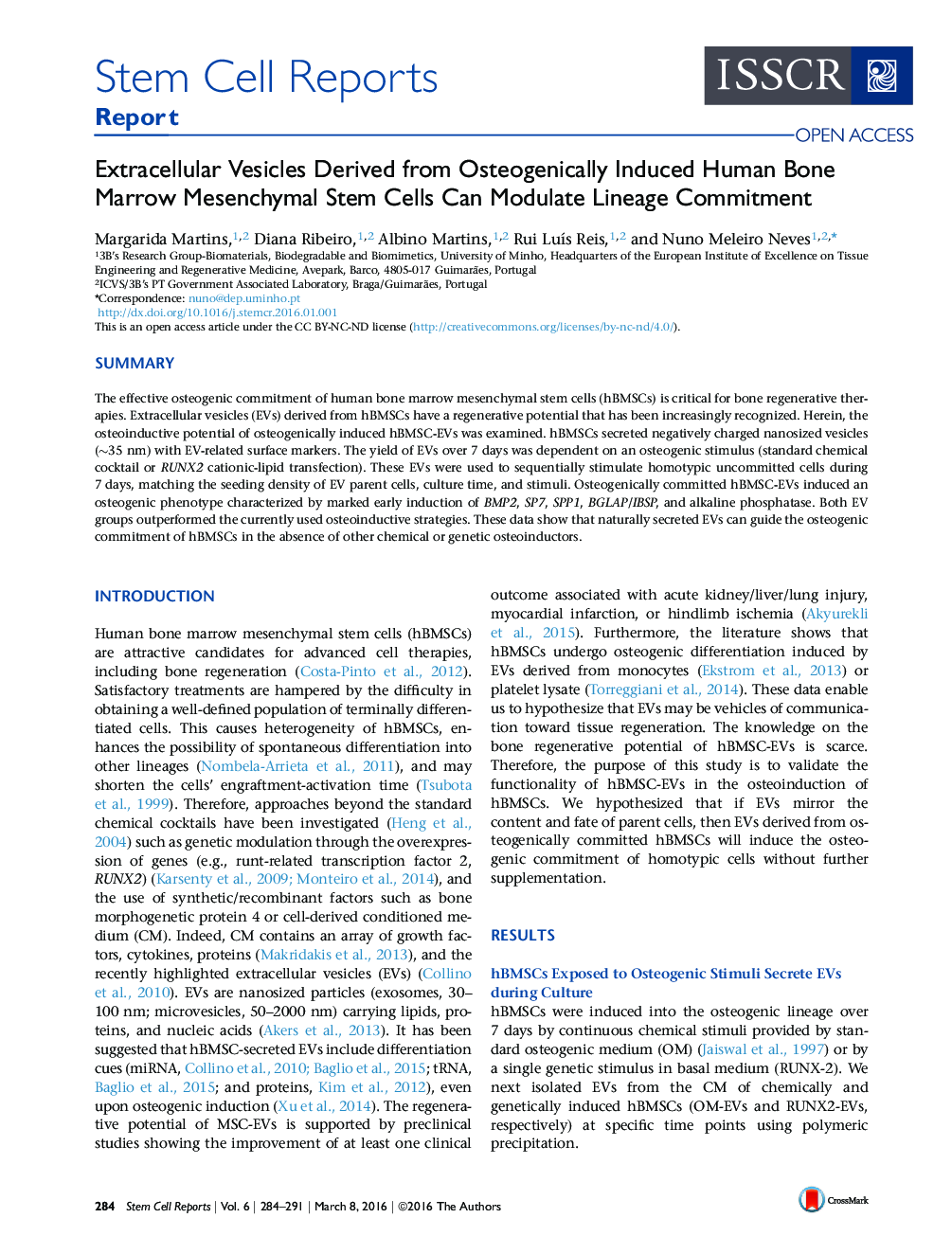| Article ID | Journal | Published Year | Pages | File Type |
|---|---|---|---|---|
| 2093303 | Stem Cell Reports | 2016 | 8 Pages |
•hBMSC-EV secretion during culture is osteogenic stimulus dependent•Osteogenically induced hBMSC-EVs are early osteoinductors•Osteogenically induced hBMSC-EVs outperform currently used osteoinductive strategies
SummaryThe effective osteogenic commitment of human bone marrow mesenchymal stem cells (hBMSCs) is critical for bone regenerative therapies. Extracellular vesicles (EVs) derived from hBMSCs have a regenerative potential that has been increasingly recognized. Herein, the osteoinductive potential of osteogenically induced hBMSC-EVs was examined. hBMSCs secreted negatively charged nanosized vesicles (∼35 nm) with EV-related surface markers. The yield of EVs over 7 days was dependent on an osteogenic stimulus (standard chemical cocktail or RUNX2 cationic-lipid transfection). These EVs were used to sequentially stimulate homotypic uncommitted cells during 7 days, matching the seeding density of EV parent cells, culture time, and stimuli. Osteogenically committed hBMSC-EVs induced an osteogenic phenotype characterized by marked early induction of BMP2, SP7, SPP1, BGLAP/IBSP, and alkaline phosphatase. Both EV groups outperformed the currently used osteoinductive strategies. These data show that naturally secreted EVs can guide the osteogenic commitment of hBMSCs in the absence of other chemical or genetic osteoinductors.
Graphical AbstractFigure optionsDownload full-size imageDownload as PowerPoint slide
